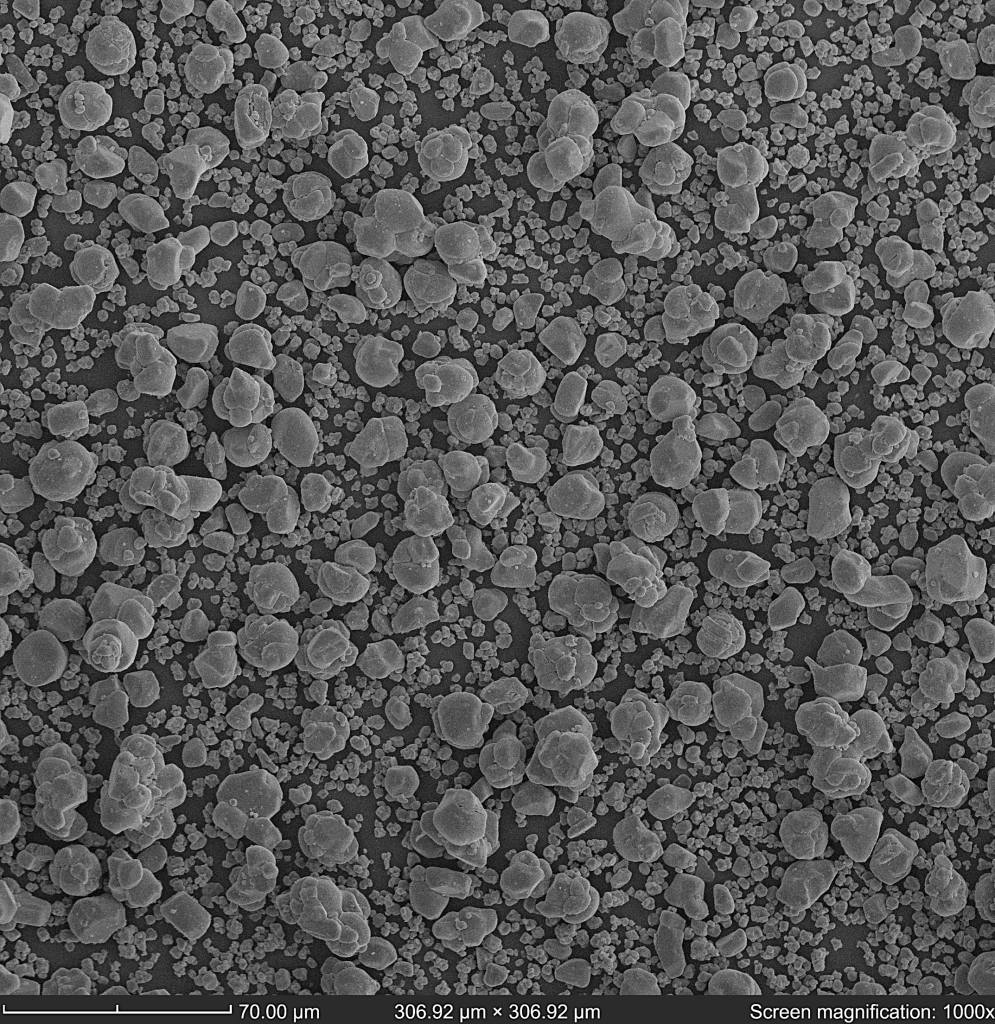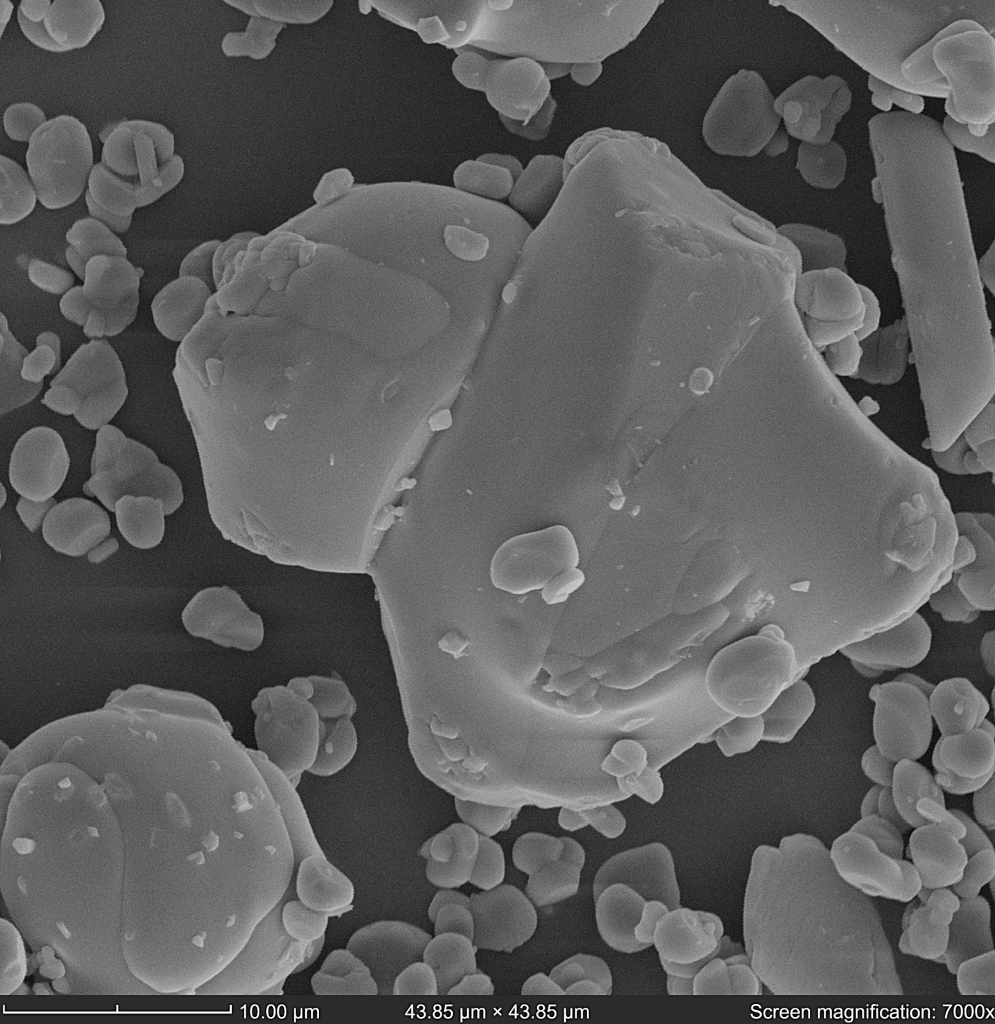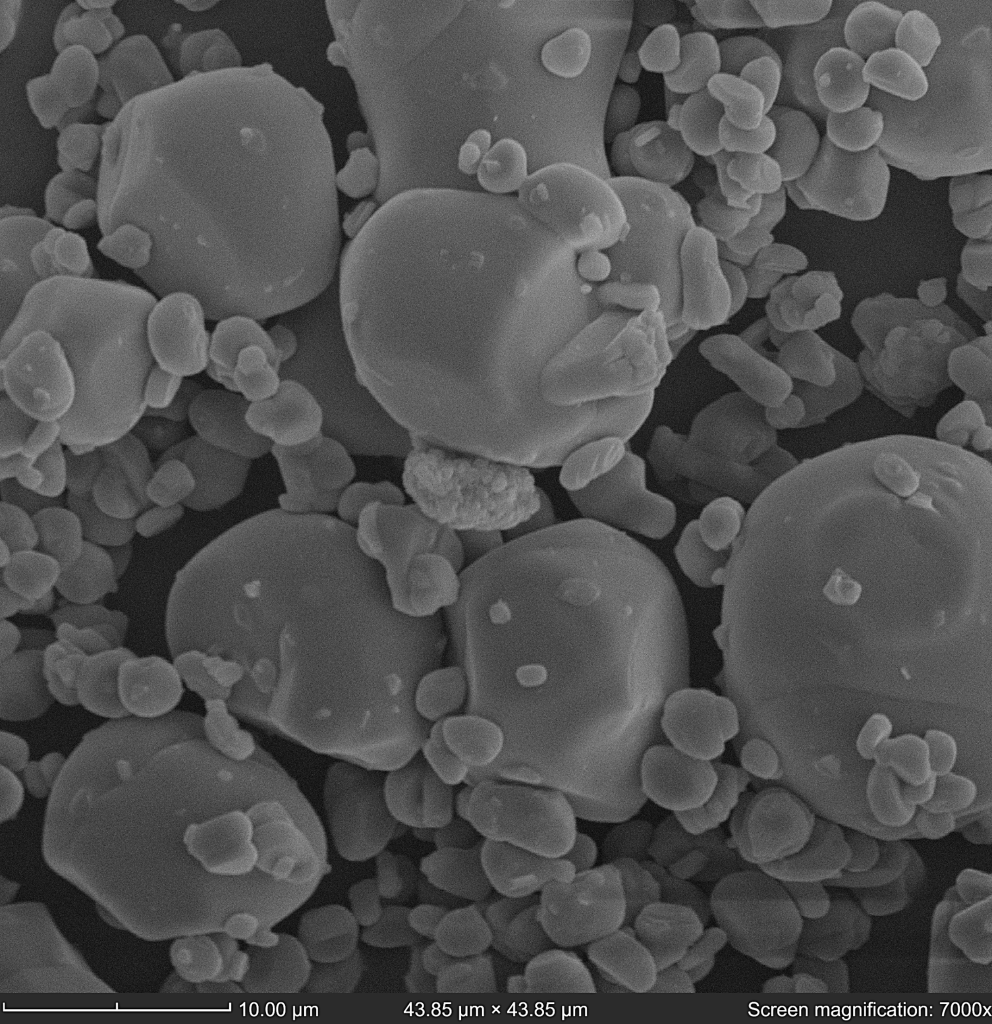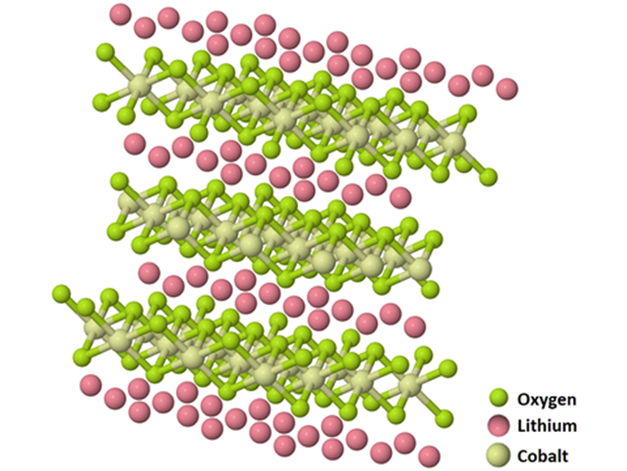Lithium cobalt oxide particle analysis
Lithium Cobalt Oxide (LiCoO₂) also called Lithium cobaltite, remains a cornerstone material in the advancement of lithium-ion batteries (LIBs), serving predominantly in the power sources of computer, communication, and consumer electronics. Introduced as an alternative to lithium metal cathodes, LiCoO₂ offers enhanced stability and capacity, critical for the demands of modern electronic devices. The ongoing development and widespread application of this material underline its importance in the industry, driven by its impressive volumetric and gravimetric energy density and high operational potential.
LiCoO₂ is characterized by its layered structure, where cobalt atoms are sandwiched between oxygen layers in a trivalent oxidation state (Co³⁺), and lithium cations (Li⁺) occupy spaces between these cobalt-oxygen sheets. This structural arrangement facilitates lithium ion movement, essential for battery operation. The material boasts a high theoretical specific capacity of 274 mAh/g and a high discharge voltage of approximately 4.2 V versus Li⁺/Li, making it exceptionally potent for energy storage solutions.
Challenges and Current Applications
Despite its advantages, LiCoO₂ faces challenges concerning capacity retention and structural stability during battery operation. Typically, when half of the Li⁺ ions are removed during charging, which occurs roughly at 4.0 to 4.2 V, there is a significant shift in configurational entropy and structural rearrangement. This change often leads to a reduced practical capacity of about 165 mAh/g, significantly lower than its theoretical capacity. Understanding and mitigating these effects are crucial for enhancing the performance and longevity of batteries using LiCoO₂.
The predominance of LiCoO₂in the battery sector for portable electronics is due to its straightforward processing and unmatched energy density. However, the nuances in its particle size and distribution have profound impacts on the overall battery performance, dictating the efficiency of ion transport and the rate of capacity fading. Thus, the microscopic examination of LiCoO₂ through technologies like Scanning Electron Microscopy (SEM) is invaluable in pushing the boundaries of battery technology. The NANOS tabletop SEM performs very well for this application.
As can be seen in the Figures 2-4, the particle size of the LiCoO₂ is predominantly 10 microns, among smaller particles of 2-3 microns.
The presence of a predominant particle size (10 microns) suggests a relatively uniform particle size distribution, which is advantageous for battery performance. Uniform particle sizes can lead to more consistent packing density, electrode porosity, and, consequently, ion transport properties within the battery.
Smaller particles (2-3 microns) interspersed among the larger ones can enhance the rate capability of the battery. Smaller particles provide a larger surface area relative to their volume, which can facilitate faster lithium ion diffusion rates. This is particularly beneficial during high-rate charging and discharging, as it allows for quicker access to the lithium ions.
Larger particles, like the 10-micron ones observed, typically undergo less stress during lithium intercalation and deintercalation, which might reduce the likelihood of mechanical degradation and cracking compared to smaller particles. This could potentially improve the long-term cycle stability of the battery.



